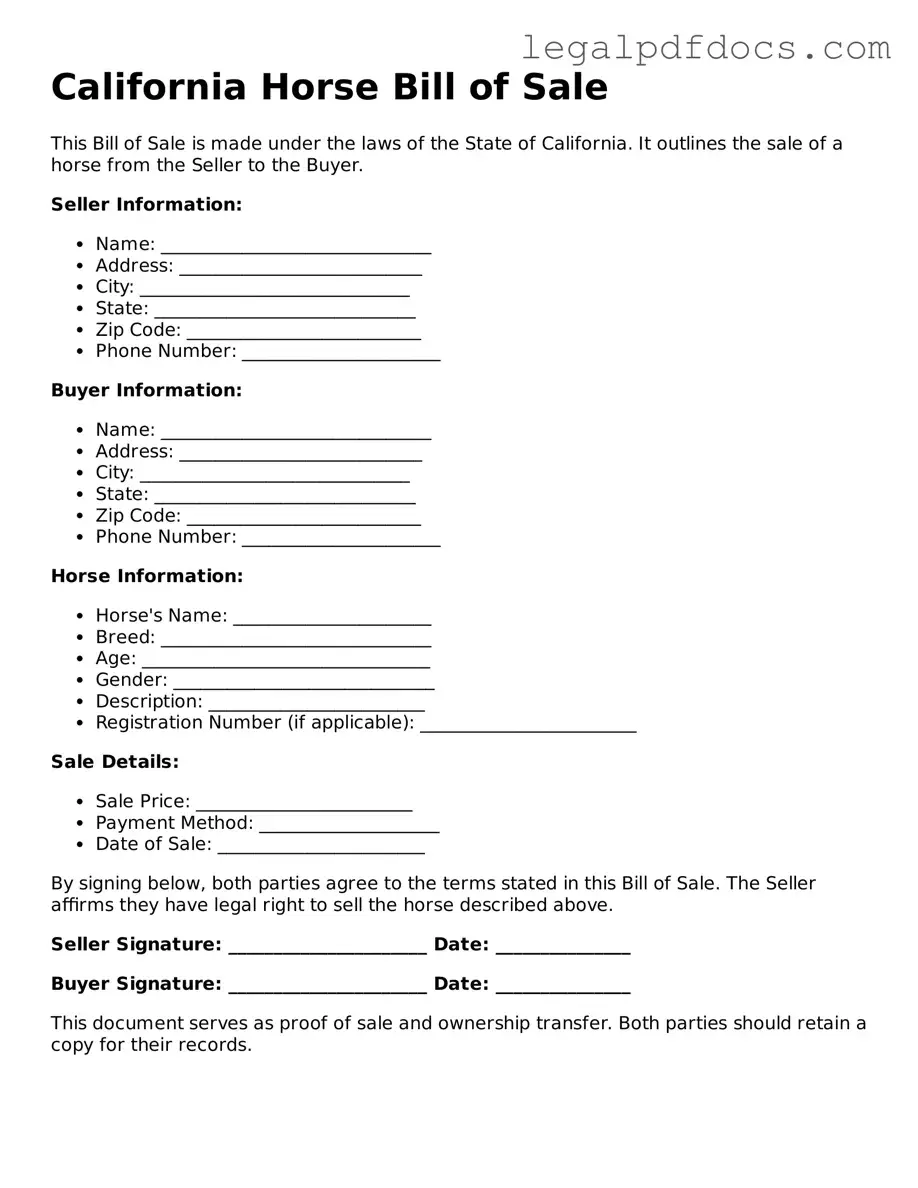Official Horse Bill of Sale Form for California
A California Horse Bill of Sale form is a legal document that records the sale and transfer of ownership of a horse. This form protects both the seller and the buyer by clearly outlining the terms of the sale. Ensure you complete this form accurately to avoid any future disputes.
Ready to fill out the form? Click the button below to get started!
Open Horse Bill of Sale Editor Here
